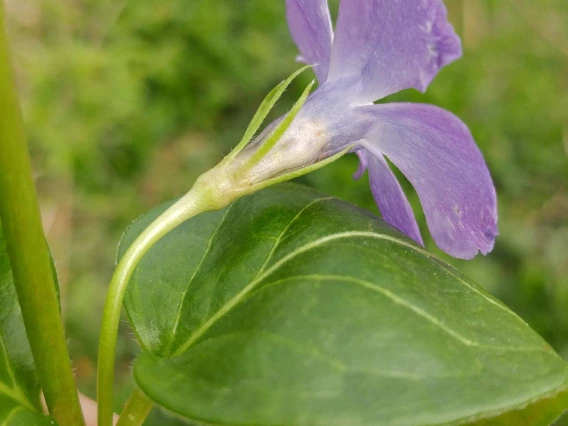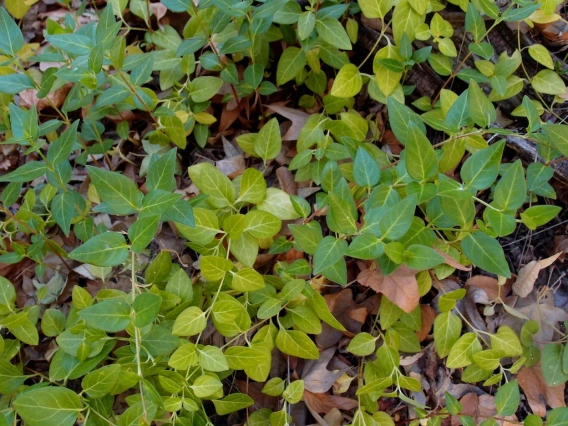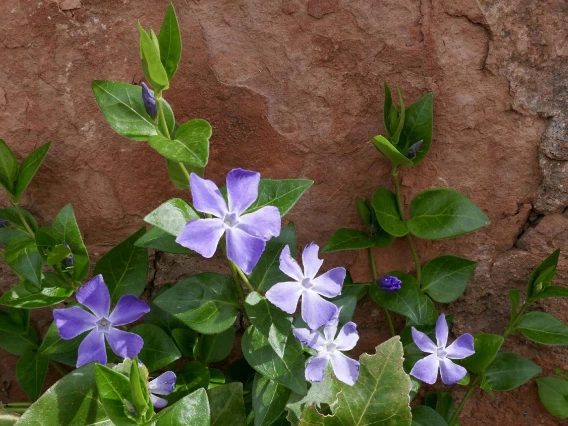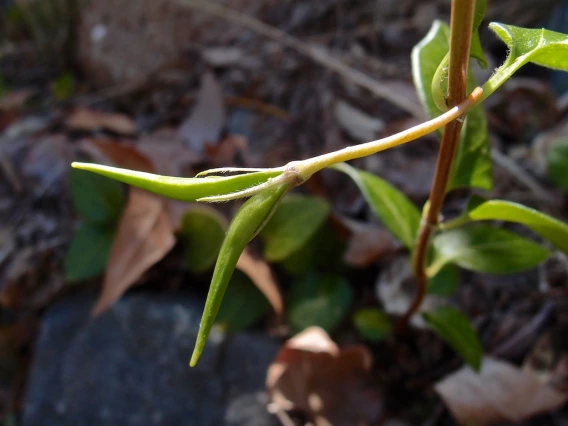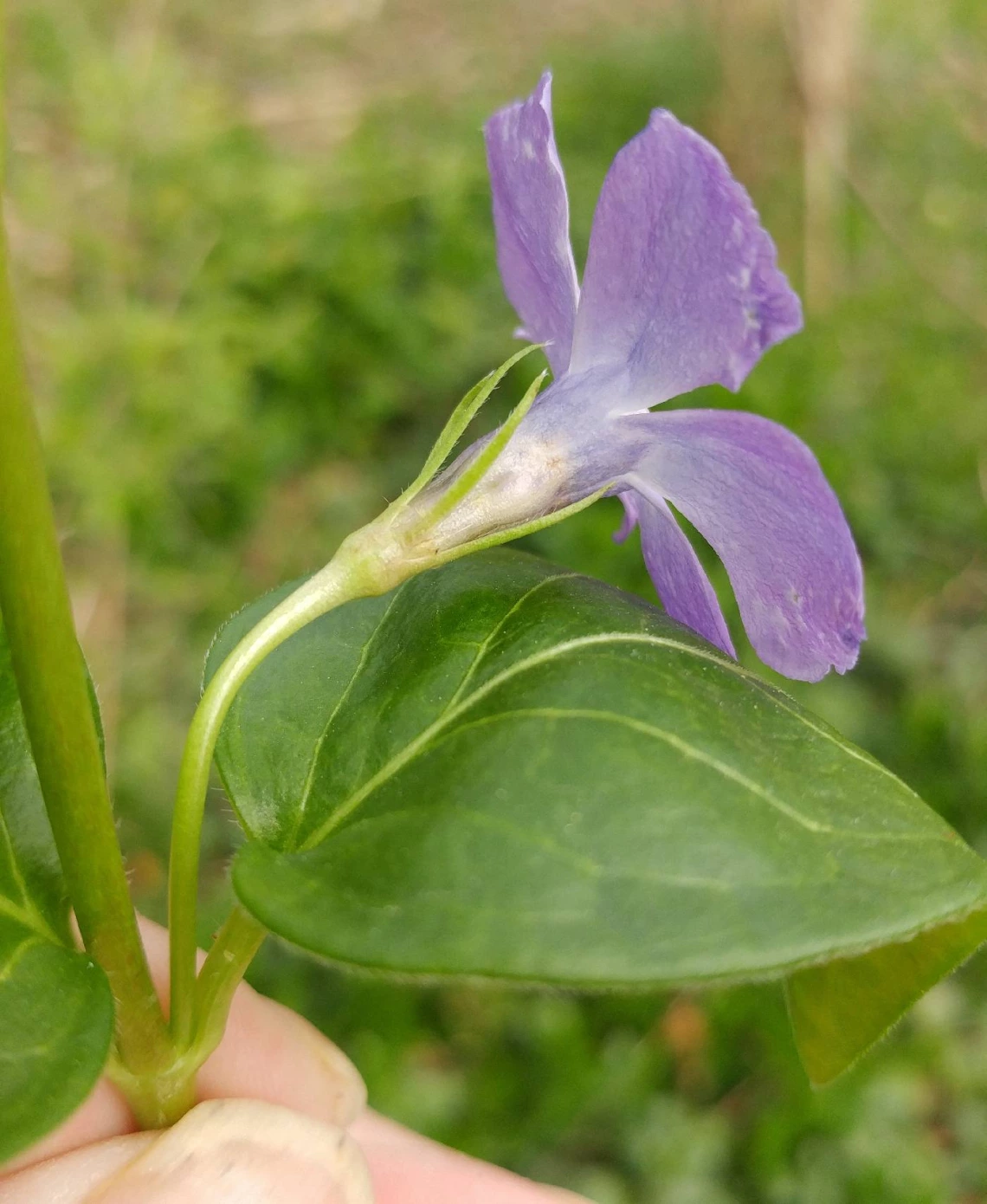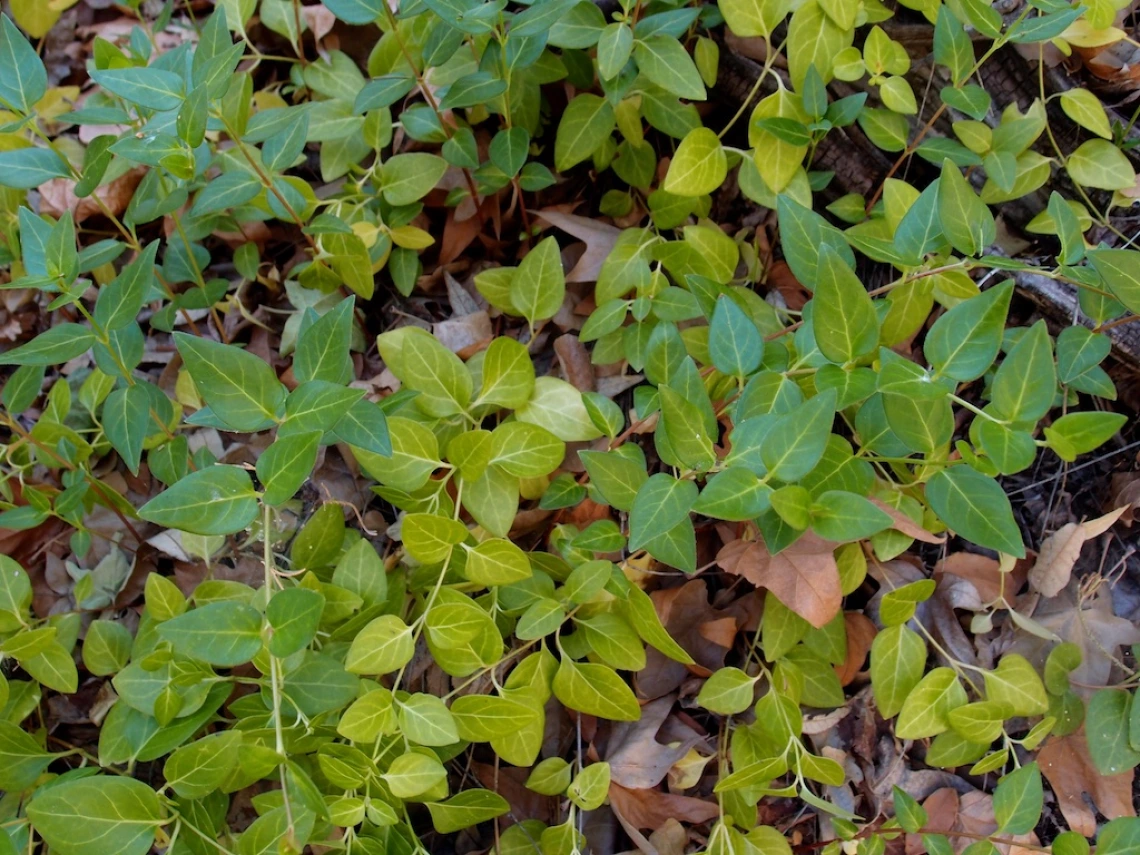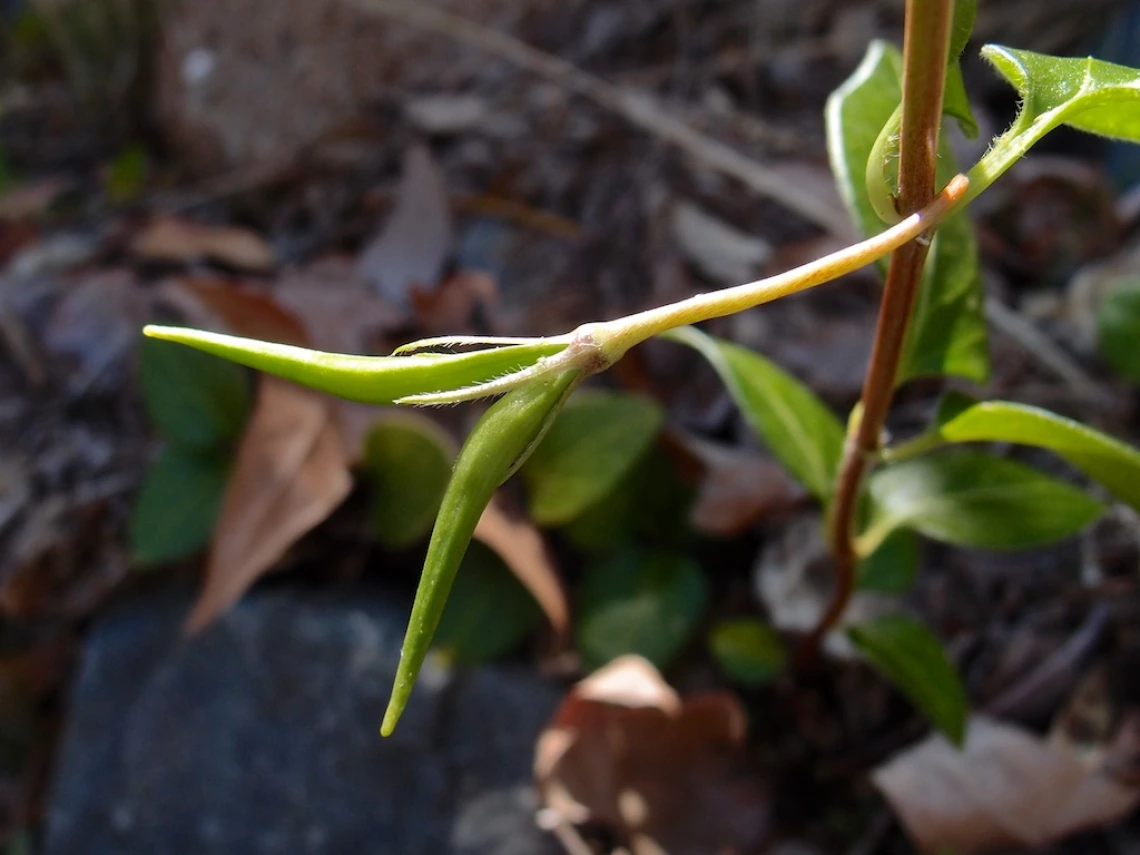Image
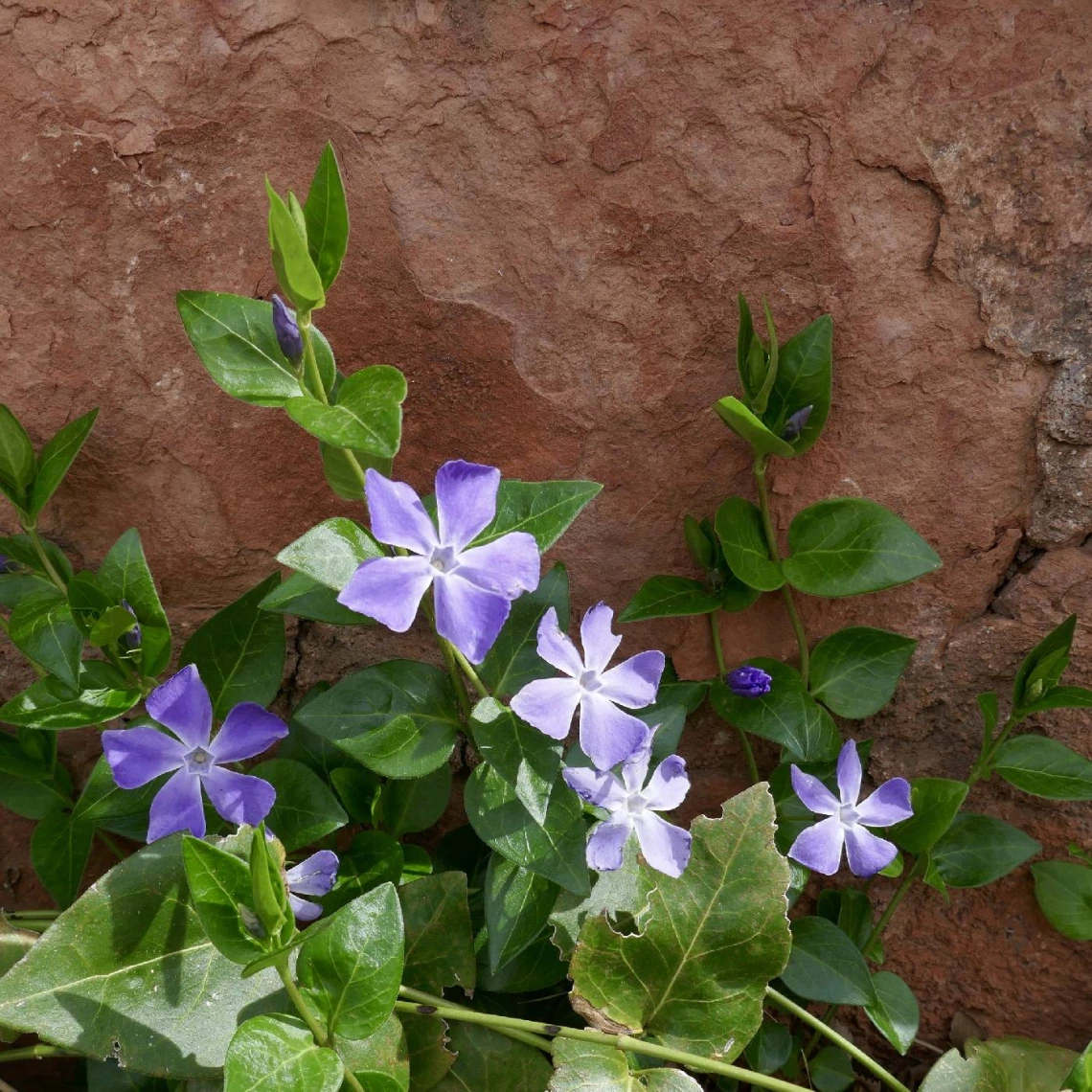
flowers and leaves
Max Licher
Common Name(s)
Bigleaf periwinkle
Large periwinkle
Greater periwinkle
Blue periwinkle
Scientific Name
Vinca major
Family
Dogbane (Apocynaceae)
Reasons for concern
Bigleaf periwinkle forms a dense cover that can spread quickly, which smothers native species. It tolerates heat, but takes up shaded areas. When in riparian and canyon bottom environments, its large spread alters natural hydrology, geologic processes, and native plant structure. Because of how quickly it spreads, weeding by hand is very difficult and labor intensive. It is also slightly poisonous, but particularly harmful to dogs.
Botanical description
Leaves
Oval shaped, veined, 3 inches long, 1-2 inches wide, opposite on the stem and dark green in color.
Stem(s)
Release milky latex when disturbed, generally low to the ground with flowering stems
Flowers
5 blue/violet colored diamond shaped petals fused at the base, grow from an upright stem. Flowers in the spring
Roots
Roots at the nodes and can extend up to 3 feet
Native to
Southern Europe
Where it grows
Bigleaf periwinkle is found in shaded areas with moist soil. It is commonly used as ornamental groundcover and can be found in residential and commercial areas, but it spreads to natural riverbeds and canyon environments
Lifecycle
Perennial
Reproduction
Vegetative spread and propagation from solons
Weedy Characteristics
Quickly forms dense mats that outcompete existing plants and prevent native seeds from sprouting. New plants can easily grow from dislodged stems, nodes, and stolons.
Look-alike Plants
Violet Wild Petunia (Ruellia nudiflora) can be distinguished by their darker purple trumpet shaped flowers compared to the lighter, flatter bigleaf periwinkle flowers. Violet Wild Petunias flower from April to September, especially after the monsoon. The plant overall is taller with longer, woodier stems unlike the bigleaf periwinkle’s vine like stems. It doesn't spread as widely horizontally. The leaves are generally bigger and have small hairs on the edges.
Control Strategies
Because of how quickly it grows, it is best to avoid planting bigleaf periwinkle. Manual removal is labor intensive, but when done make sure to pull out the entirety of the plant and remove from the ground so the stoles don’t re-root. This can be done by hand or with a rake. Manual removal requires multiple treatments for larger areas. 3% glyphosate is most effective when applied after cutting down the plants with a weed wacker, with best results in early spring. Oxyfluorfen based herbicides are also effective.
References
- https://www.public.asu.edu/~camartin/plants/Plant%20html%20files/vincamajor.html
- https://www.fs.usda.gov/database/feis/plants/vine/vinspp/all.html
- http://www.iucngisd.org/gisd/species.php?sc=487
- https://www.cal-ipc.org/resources/library/publications/ipcw/report88/
- https://swbiodiversity.org/seinet/taxa/index.php?taxon=Vinca+major&formsubmit=Search+Terms
- https://plants.ces.ncsu.edu/plants/vinca-major/

